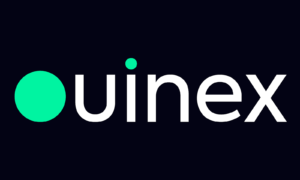Banks have long served as middlemen between fund creators and fund consumers in the consumer finance ecosystem. Whether it was the movement of money between two individuals, lending or borrowing, banks were the single link between the numerous enterprises. They generated money by manipulating the spread between lending and borrowing rates in the process.
However, the introduction of technological innovation has radically altered the situation, allowing a new set of businesses — fintech — to supply financial services efficiently.
However, the underlying principles of payments and loans have not changed due to the disturbance. It has ushered in a revolution by facilitating decentralization and aggregation. The former connects lenders and borrowers individually, and the latter brings together groups of lenders and borrowers on a single platform. By establishing a fair playing field, people were able to interact and work to attain their goals. The marketplace is determined by the borrower and lender, not by the financial institution.
Fintech has removed the financial provider’s centrality by shifting away from the traditional bank account or payment provider’s network to a variety of identities for them — mobile, wallet, or unique identity code. To transfer cash between players, all you need is an identity. The primary impetus driving peer to peer lending is the possibility of a win-win situation among organizations in the financial ecosystem, driven by the entities themselves and expedited by a good technology platform.
Peer-to-Peer Lending
It is a type of lending where people lend to each other. The concept is new in India, although, as previously stated, much has already occurred in this field in nations such as the United States and China. While the United States today has a few large companies with billion-dollar values, such as Lending Club and Prosper, China has a far more fragmented market with many small competitors. More than 100 peer-to-peer lending organizations in China have closed their doors, and few people believe it will ever be a bigger market than the United States.
In India, there are primarily two ways to obtain investment: through banks, which entails a great deal of paperwork, headaches, documentation, and time, or through microfinance, chit funds, community lending, and other options for the less fortunate. There was a gap in the market for the urban middle class, which is in desperate need of quick cash.
Lenders looking for a higher return on their investment and those looking for quick cash for a business or other reasons are drawn to this concept. While the lender chooses who to invest in, the user decides the interest rate that he agrees to pay on a monthly basis via a post-dated check.
Reactions to Change
As commerce moves beyond the traditional merchant relationship to a broader peer-to-peer transaction, P2P is a critical transition for banking institutions. Lending and payment-related operations over P2P have a lot of promise. For example, the consumer credit market share is estimated to be $3.2 trillion by some estimations. Banks are looking into retaining or increasing their market share in this arena through the proper partnership – with the right platform(s) and bringing the industry standards to that platform(s). On the one hand, they employ fintech to allow their clients to lend or borrow money, and on the other side, they act as a customer by charging a commission and keeping their customers. Fintechs gain from having more leads and being part of a wider community. It has also enabled banks to compete with money transfer companies.
Governments and authorities are wary of P2P since it is classified as a para-banking service. P2P models are vulnerable to a variety of credit and liquidity issues, and authorities have been reluctant to recognize this trend and take actions to minimize these risks. The legal risk components begin with regulators’ ambiguity about the category in which new financial products should be classified.
On the other hand, regulators are urging banks to connect with these platform providers in the hopes that fintech will become solely platform providers, limiting their reach to such businesses. Furthermore, banks that partner with fintech bring their legal protection and dispute resolution methods. This is a positive trend. The customary protections afforded to borrowers or lenders under present regulation will not apply as long as fintech remains unregulated.
Future Cause of Action
Personal lending, mortgage lending, and other types of unsecured debt, including credit card lending, are examples of retail products that could take the fintech industry forward. Given that peer-to-peer loan volume is predicted to reach $77 billion in 2015; there’s a good chance that P2P loan providers’ home loan footprint will expand. As more P2P lenders compete for mortgage consumers, this new sort of loan is likely worth investigating and comparing to other, more traditional lending options. Based on the nature and scope of partnerships with regulated institutions, there will be a churn in P2P platforms. Those who are self-sufficient may not be able to live. As platforms mature and gain traction, components for fraud, credit score, and risk management that are already present in current systems will be added. Banks are also likely to pursue partnerships with banking aggregators, insurance aggregators, and digital wallet providers, in addition to P2P platforms. Although this may not give any protection against credit risk for users, the fact that their banks recommend specific platforms lends confidence. It’s also less likely that collaborating platforms will go bankrupt because it’s in the bank’s best interests to keep the risk low.
Conclusion
The peer-to-peer (P2P) phenomena have attracted both curiosity and debate in recent years. Fintechs appear to be eating into the market share of regulated banks in lending and payments, with the latter encompassing money transfer companies. Financial institutions’ central position in society is dwindling. Given the market potential estimations for both lending and payments, it may be in banks’ best interests to form partnerships with fintech in order to establish synergies and reap benefits.


































